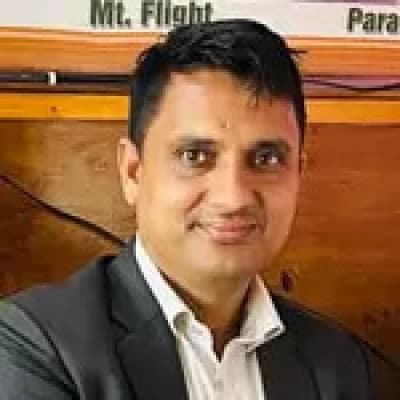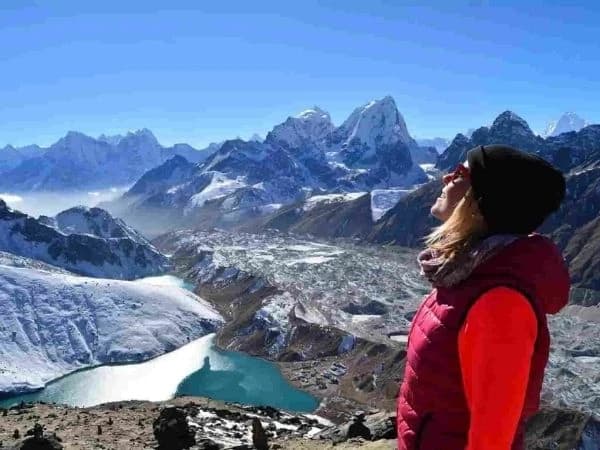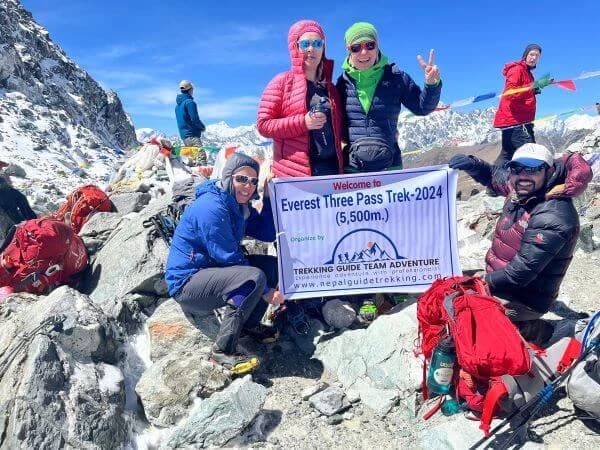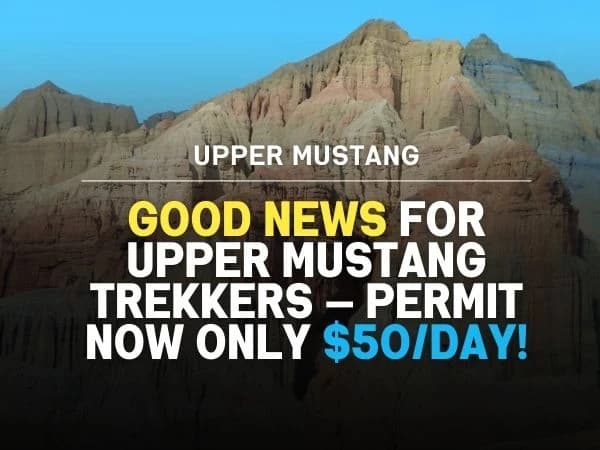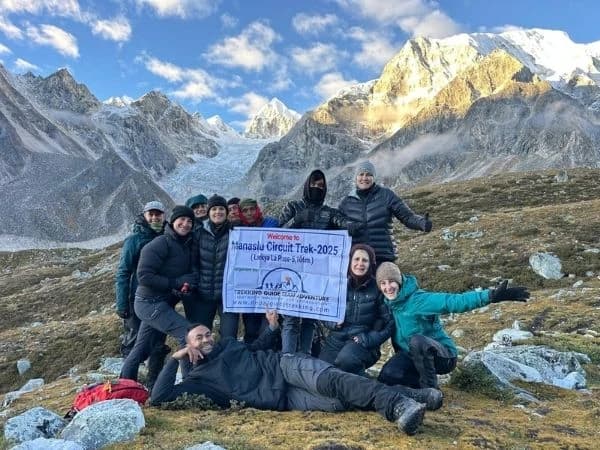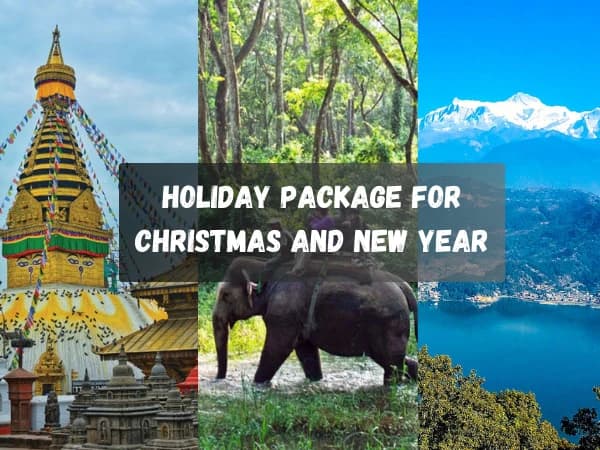Why Choose the Everest Three Passes Trek?
The Everest Three Passes Trek stands out as one of the unique and most recommended trekking routes in the Everest Region. Unlike the regular Everest Base Camp trek, this trip takes you to the remote sherpa villages in high elevation, heavenly Gokyo lakes and intimidating high passes. Moreover, a very few numbers of trekkers do this trek which means you will avoid the crowd and will be able to fully enjoy the unexplored nooks and corners of Everest region.
Highlights of Everest High Pass Trek
- Crossing three challenging high passes - Kongma La (5,535m), Cho La (5,420m), and Renjo La (5,340m)
- Stepping on Everest Base Camp (5,364m) and Kala Patthar (5,545m) for the best Everest views
- Exploring the mesmerizing Gokyo Lakes, exploring the gokyo valley and summiting Gokyo Ri (5,357m)
- Experiencing Sherpa culture in Khumbu Region
- Witness the spectacular panoramas of Mt. Everest, Lhotse, Makalu, Ama Dablam, Cho Oyu, and more
If you’re seeking a true Himalayan challenge that combines Everest Base Camp with Gokyo Lakes and high passes, this is the trek for you.
Detailed Overview of the Everest Three High Passes
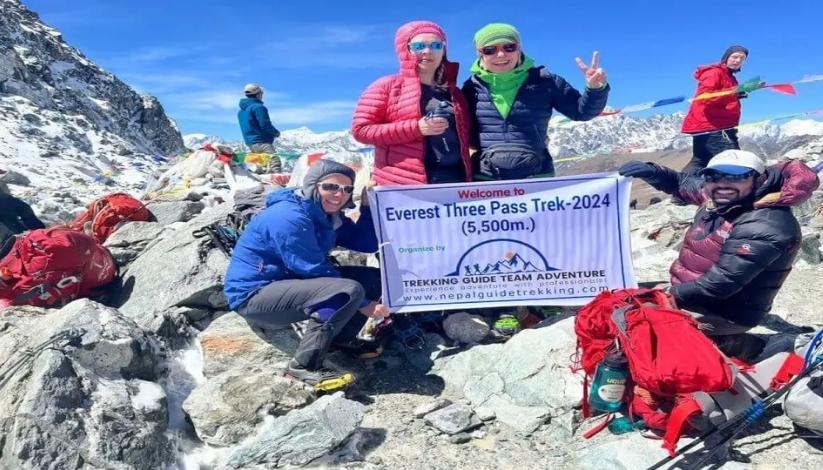
Kongma La Pass (5,535m): The Highest and Toughest
First high pass of three passes you will encounter on the trail is the Kongma La Pass. The pass connects Dingboche to Lobuche, while flabbergasting you by amazing views of Mt. Ama Dablam, Makalu, Lhotse and so on. Besides, you will also see the Khumbu glacier from the top. The pass is also the highest of all 3 passes. The pass is considered the toughest one as the ascent is steep and often covered in snow. So, it is highly recommended to start early and have great energy.
Cho La Pass (5,420m): The Most Adventurous
Cho La is the second pass in the high pass trail, connecting two villages Dzongla which is near Lobuche and Thagnak, near Gokyo. The pass is called most adventurous and technical as it includes crossing Cho La glacier which can be slippery mostly during winter and bad weather. It is best if you carry crampons or micro spikes and properly acclimatize before the pass.
As soon as you cross the pass, you will enter the beautiful Gokyo Valley, surrounded by turquoise lakes and snowy mountains like Cho Oyu.
Renjo La Pass (5,340m): The Most Scenic
The last pass, Renjo La, leads from Gokyo to Lungden. It’s relatively easier compared to the first two, but the panoramic view from the top - showing Everest, Lhotse, Makalu, and Gokyo Lakes below is often considered one of the best viewpoints in the Everest region.
Gokyo Lakes and Gokyo Ri
There are six lakes in Gokyo Valley and are sacred to both religion: Hinduism and Buddhism. The largest lake among them is called ‘Dudh Pokhari’ which means milk lake in Nepali due to its color.
A short but steep climb to Gokyo Ri (5,357m) offers trekkers with a breathtaking panorama of Everest, Cho Oyu, and the Ngozumpa Glacier the longest in Nepal.
Everest Base Camp and Kala Patthar
This trip not only takes you to the iconic three passes but also to foot of Everest - Everest Base Camp (5,364m) where Everest Expedition begins. The goal of the trekker who chooses classic Everest Base Camp Trek Package is to arrive there.
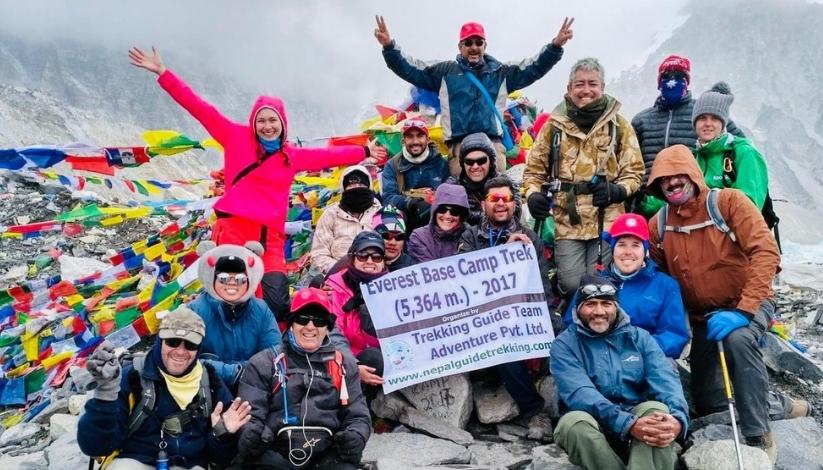
The next morning, a sunrise hike to Kala Patthar (5,545m) offers the closest and most dramatic view of Mt. Everest’s summit, glowing gold in the early light.
Everest Three Passes Trek Cost 2025/26
Our Everest Three Passes Trek price for 2025/26 starts at USD 1,799 per person. Additionally group discounts are available.
Everest High Pass Trek Cost per person and for group
- 1 pax: $1,799 (Single Supplementary applicable +300$)
- 2-6 pax: $1,750
- 7-10 pax: $1,600
What’s Included and Excluded in the Everest Three Passes Trek Package?
|
Included
|
Excluded
|
|
Airport pick-up and drop in Kathmandu
|
Nepal entry visa and personal travel insurance
|
|
3 nights’ hotel in Kathmandu + all lodges/tea houses during the trek
|
Personal trekking gear and equipment
|
|
Breakfast, lunch, and dinner during the trek
|
International airfare and airport taxes
|
|
Domestic flights (Kathmandu ↔ Lukla) and on-ground transport
|
Extra meals or accommodation outside trekking itinerary
|
|
Sagarmatha National Park Permit & TIMS registration
|
Personal expenses: Wi-Fi, phone calls, laundry, hot showers, drinks, and snacks
|
|
Experienced trekking guide and porter (1 porter per 2 trekkers)
|
Tips for guide and porter, Kathmandu sightseeing permits
|
|
Emergency helicopter arrangement and first-aid kit
|
|
|
All guide/porter salary, food, accommodation, and insurance
|
|
Everest 3 Passes Trek Itinerary (21 Days)
Below is our recommended 21-day Everest High Passes Trek itinerary starting and ending in Kathmandu.
- Day 1: Arrival in Kathmandu
- Day 2: Trek preparation day
- Day 3: Fly to Lukla (2860m) and trek to Phakding (2610m)
- Day 4: Trek to Namche Bazar
- Day 5: Acclimatization and rest day at Namche Bazar
- Day 6: Trek to Tengboche
- Day 7: Trek from Tengboche to Dingboche
- Day 8: Acclimatization and rest day in Dingboche
- Day 9: Trek to Chhukung
- Day 10: Chhukung to Kongma La Pass and Lobuche
- Day 11: Trek from Lobuche to Everest Base Camp
- Day 12: Hike to Kala Patthar and trek to Dzongla
- Day 13: Trek from Dzongla to Tauna via Cho La pass
- Day 14: Trek from Tauna to Gokyo Village and go on an afternoon sidewalk to the 5th Gokyo Lake
- Day 15: Hike to Goko Ri and rest day in Gokyo village
- Day 16: Cross Renjo La pass
- Day 17: Trek from Marlung to Namche Bazaar
- Day 18: Trek from Namche Bazar to Phakding
- Day 19: Trek from Phakding to Lukla
- Day 20: Flight back to Kathmandu
- Day 21: Departure day
Three Passes Trek Map
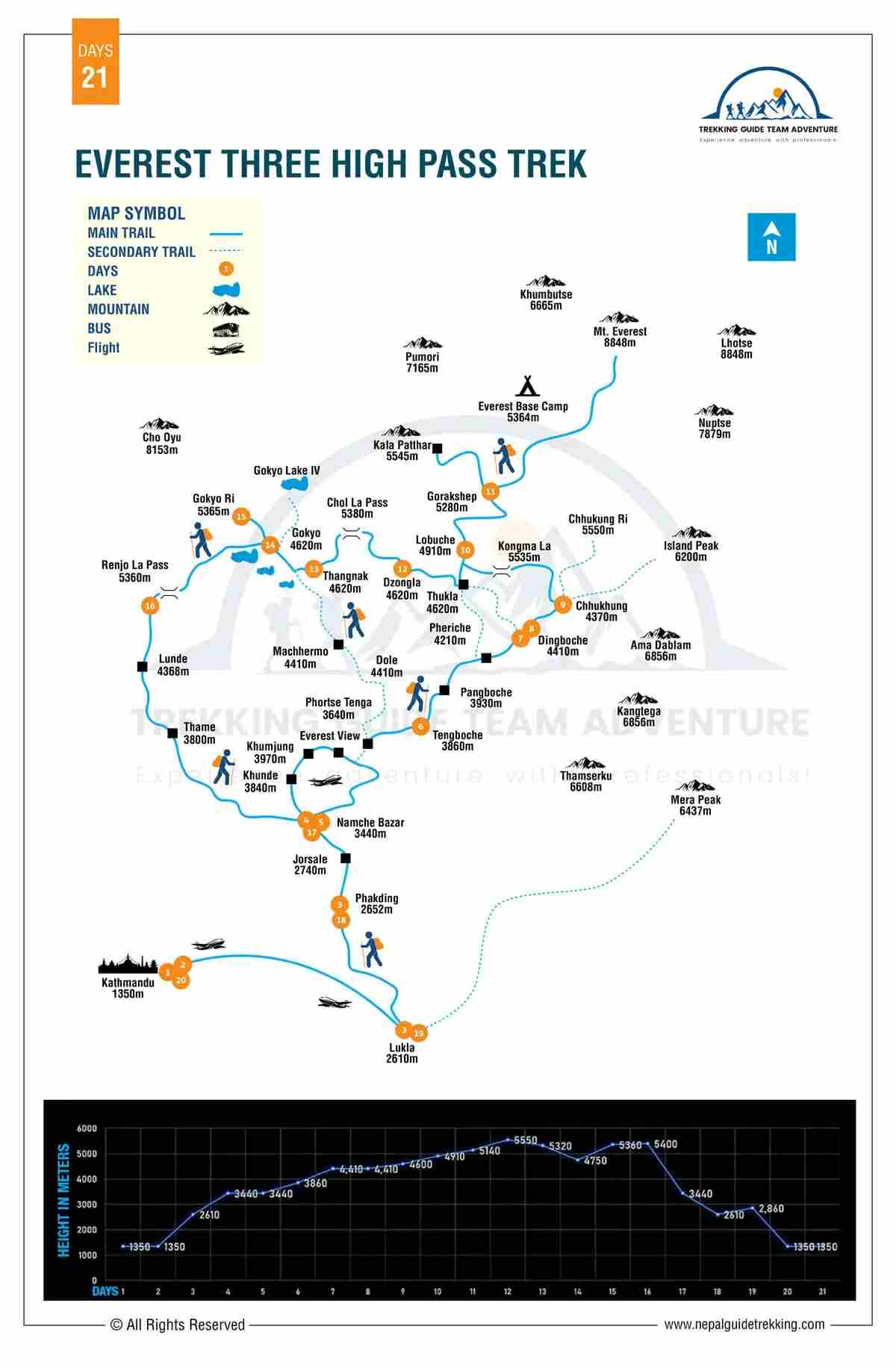
Everest Three Passes Trek with Guide
Everest Three Passes Trek with a guide is essential for safety and navigation, also considering the difficulty level of the trek. The high passes often involve snow, icy sections, and confusing trails. Our professional trekking guides are government-licensed, experienced, and well-versed in first aid and high-altitude response.
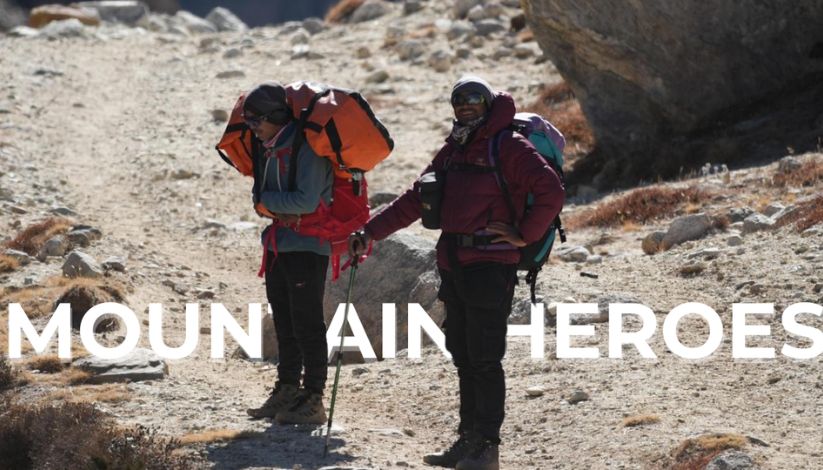
At Trekking Guide Team Adventure, whether you are solo or group, will be led by a certified mountain guide supported by local porters who carry your gear safely and responsibly. With our expert team, you’ll trek with confidence, comfort, and security even in the most remote sections.
For those looking to reduce trekking costs, it is also possible to hire a local guide and porter from Lukla for your trek, while still enjoying the support, safety, and expertise needed for a successful journey.
With our expert team, you can trek with confidence, comfort, and security, even in the most remote and demanding parts of the Everest region.
Everest Three Passes Trek with Gokyo Lakes and EBC
Our 21-day itinerary includes both Everest Base Camp and the Gokyo Lakes, giving you the best experience.
- The EBC route offers close-up views of Everest, the Khumbu Icefall, and legendary climbers’ routes.
- The Gokyo section presents turquoise lakes and panoramic views from Gokyo Ri.
Combining these sections via the Three High Passes creates the most complete and scenic trekking route in the region.
Best Everest Three Passes Trek Company
Choosing the right trekking company is vital for safety, comfort, and a successful experience.
Why Trekking Guide Team Adventure?
- Over 21 years of guiding experience in the Himalayas
- Licensed and insured local guides helping you with local insight
- Small-group departures with personalized trip
- Flexible itineraries and customizable packages as per your requirement
- Excellent client reviews and transparent pricing
Booking Everest Three Passes Trek Online
Ready to take on your dream trek?
Booking your Everest Three Passes Trek online with Trekking Guide Team Adventure is simple and secure.
How to Book:
- Fill out our online inquiry form.
- Confirm your travel date and group size.
- Pay a small deposit to secure your spot.
Once booked, our team will send you a detailed packing list, flight information, and preparation tips.
Contact Us: Have questions about the itinerary or cost?Contact Us or message us directly on WhatsApp our team will reply promptly.
Everest Three Passes Trek – Essential Information
- Best Season: Spring (March–May) and Autumn (September–November) are ideal for clear skies and stable weather.
- Difficulty: Challenging and requires good fitness and prior trekking experience.
- Accommodation: Teahouses and lodges along the route with basic comfort.
- Permits Required: Sagarmatha National Park Entry Permit and Khumbu Pasang Lhamu Rural Municipality Permit
Conclusion
The Everest Three Passes Trek 21 Days Package is not just a trek but a complete exploration of the Khumbu Himalayas. From iconic viewpoints to hidden trails, it offers the most adventurous and scenic route to experience Everest up close.
At Trekking Guide Team Adventure, we’re proud to offer expertly guided, safe, and well-organized treks that turn your Himalayan dream into reality.
Ready to conquer the Three High Passes of Everest?
Contact us today to plan your Everest Three Passes Trek Package and let our experienced team handle every detail - from Kathmandu to the top of the world!

People Also Ask About Everest Three Passes Trek:
1. How difficult is the Everest Three Passes Trek?
➡️It’s one of the more demanding treks in Nepal, involving high altitude and long hiking days. However, with proper acclimatization and guidance, it’s achievable for fit and determined trekkers.
2. Do I need prior experience?
➡️Previous high-altitude trekking experience is helpful but not mandatory. Regular fitness training before the trek is highly recommended.
3. What if the Lukla flight gets delayed?
➡️Weather delays can happen. We always include an extra buffer day in Kathmandu to manage such situations.
4. Can I combine this trek with Island Peak climbing?
➡️Yes, we can tailor a combined Everest Three Passes and Island Peak itinerary upon request.
5. What is the best time to do the trek?
➡️The best time is March–May and September–November. These months offer clear skies, stable weather, and excellent visibility.
6. Do I need a guide for this trek?
➡️Yes. A licensed guide is strongly recommended for safety and navigation, especially across snowy or confusing trails.
7. What kind of accommodation is available?
➡️You’ll stay in tea houses or lodges with basic twin rooms and shared bathrooms. Facilities get simpler at higher altitudes.
8. Is altitude sickness common?
➡️Yes, since the trek goes above 5,000 m. Walk slowly, acclimatize well, and stay hydrated. Carry Diamox if needed.

